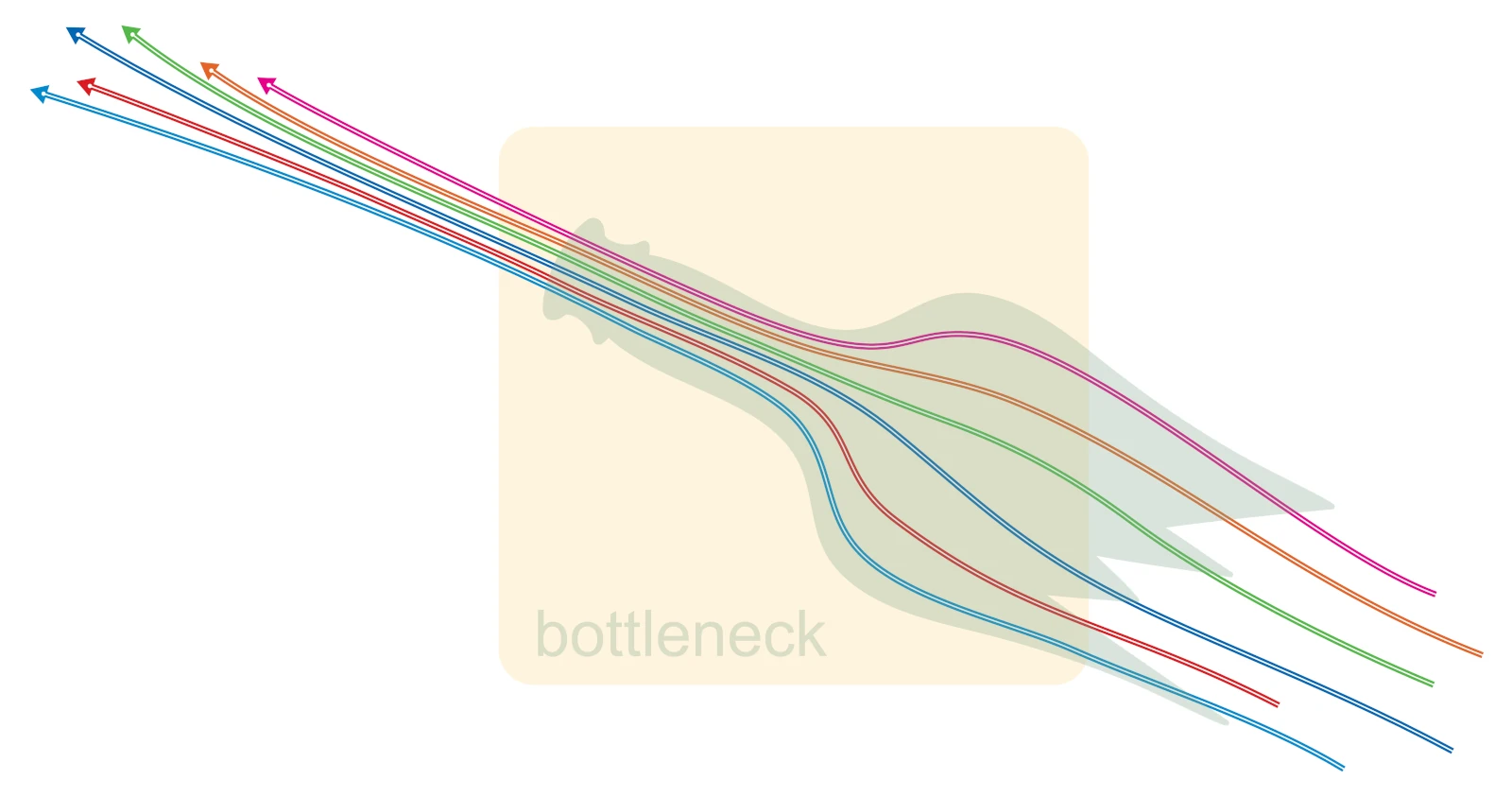
Bottleneck is a term often used in business operations management, which refers to a point in a production or operational process that limits the overall performance of a system. Eliminating bottlenecks is critical to improving the efficiency and competitiveness of a business.
In a business context, a bottleneck is defined as a point in a production or operational process that operates at the limit of its maximum capacity, restricting the flow of products or services. In practice, this means that despite efforts at other stages, the entire system is constrained by this essential operation or component. A bottleneck can be compared to a narrow section of a hose – although the rest of the hose is healthy and functional, this one point prevents smooth flow.
Causes of bottlenecks
The causes of bottlenecks in business processes can be varied and complex. One of the main factors is improper planning and management of resources. A company must anticipate the right amount of raw materials, materials, or personnel for a particular stage of production or service to avoid unforeseen delays and shortages. In addition, bottlenecks can result from efficient processes and proper allocation of resources. If there are no clearly defined operating procedures or resources are misused, this can overload specific points while other areas remain underutilized.
Effects of bottlenecks
The effects of bottlenecks in business processes can be very severe for a company. First and foremost, they limit productivity, causing delays in order processing, leading to customer dissatisfaction and a loss of trust in the company. In addition, bottlenecks can cause unpredictable fluctuations in deliveries, leading to financial losses, especially if it requires incurring additional costs for urgent deliveries or compensating customers. In addition, the prolonged existence of a bottleneck can negatively affect employees’ morale, who may feel frustrated by impeded work and the inability to achieve desired goals.

Recognizing and identifying bottlenecks
Recognizing and identifying bottlenecks requires a systematic approach and analysis of business processes. It is essential to thoroughly assess each stage of production or operations to determine potential flow-limiting points. This can be achieved through observation, data analysis, and consultation with employees at various levels of the organization.
Using ERP technologies to identify bottlenecks
ERP (Enterprise Resource Planning) technologies can be beneficial in identifying bottlenecks in business processes. ERP systems allow you to collect, analyze, and visualize data from different areas of your business. This makes it easier to identify problem areas and bottlenecks.
Using the reporting and analysis functions available in ERP systems, managers can track the performance of individual processes, monitor performance indicators, and identify areas needing optimization. In addition, ERP technologies enable the automation of many tasks, which can help eliminate unnecessary delays and errors in business processes.
Bottlenecks pose severe challenges to business operations but, at the same time, open up opportunities for process improvements and optimization. A key element is the systematic analysis, identification, and elimination of causes that limit the flow of products or services. Technology, such as ERP systems, can significantly facilitate this process by enabling better data analysis and business performance monitoring. Eliminating bottlenecks leads to a more efficient and competitive business in the marketplace. Effective supply chain management, based on innovative technologies and collaboration between partners, is becoming a strategic tool for companies seeking competitive advantage.






